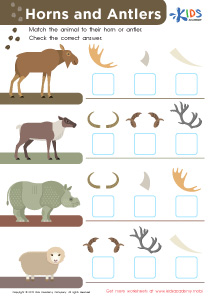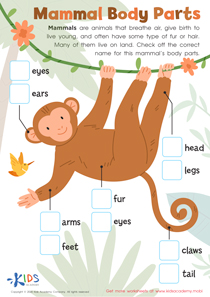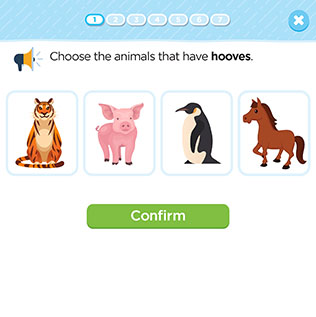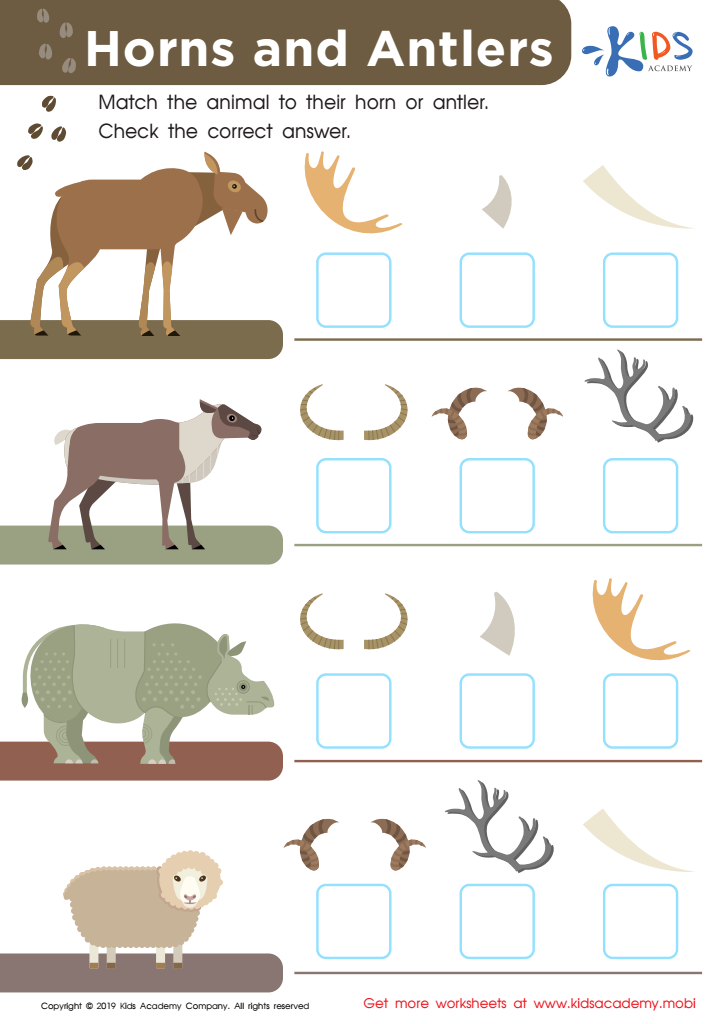Land Animal Structures - Lesson for Grade 1, Chapter - Animals
In the "Land Animal Structures" lesson, first-grade students will embark on an exciting exploration into the world of animals, focusing on those that inhabit the land. This lesson, as part of the Science unit on Animals, is designed to captivate young minds and enhance their understanding of the natural world.
Students will learn about various physical structures of land animals, such as horns, antlers, and other mammal body parts. Through engaging activities like the "Horns and Antlers Worksheet" and the "Mammal Body Parts Worksheet," they will discover the purpose and function of different animal features. This includes how these structures help animals in their survival, protection, and in finding food.
Understanding the physical features of land animals is important for several reasons. It fosters a sense of curiosity and respect for wildlife, encouraging children to appreciate biodiversity. Knowledge about animal structures also lays the groundwork for future learning in biology, ecology, and environmental science. By recognizing the unique characteristics of animals, students can better understand the interconnectedness of life on Earth and the importance of protecting our natural world.



-
Activity 1 / Horns and Antlers Worksheet
Some people use the words horns and antlers interchangeably, but with this free worksheet, your child will learn that there is a difference between the two! From the pictures, they'll look at what each animal has—a pair of horns or a pair of antlers, and they'll be able to see how the antlers or horns may help them in their everyday habitats. They'll be able to check off the correct sets of antlers or horns, and learn about animal body adaptations in the process.
-
Activity 2 / Mammal Body Parts Worksheet
Mammals such as ourselves have unique features that make us similar to other creatures in the animal kingdom! Use this cute and colorful worksheet to help your little scientist identify the common body parts of a mammal, which can include fur, arms, legs, tails, and more! Simply read the passage at the top of the page to learn what makes an animal a mammal, and then watch as children check off the boxes to identify each body part of an adorable monkey!
-
Activity 3 / Land Animals - Quiz
Students will demonstrate their ability to identify land animals and their body parts.


